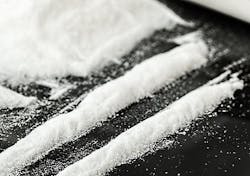Wastewater sampling shows methamphetamine use across New Zealand
WHANGAREI, New Zealand – Testing of New Zealand’s wastewater has revealed some intersting consumption habits about its citizens.
Results from a wastewater treatment plant in Whangarei showed high levels of methamphetamine use compared to people living in Christchurch and Auckland.
Results showed that the weekly drug use per 1000 people in Whangarei was 7665g compared to 2824g in Auckland and 1952g in Christchurch.
However, cocaine was said to be more prevalent in Auckland with 396g a week consumed per 1000 people, compared to 109g in Christchurch and 39g in Whangarei.
The New Zealand Herald reported that there had been an increase in aggravated robberies over the last few years and methamphetamine “was a drive for many crimes in the region”.
The water testing is part of a two-year pilot programme between police and the Northland District Health Board with the aim to reduce methamphetamine demand by enhancing services for treatment.
Wastewater sampling is now becoming a common tool to measure drug consumption across cities.
At the end of last year, results emerged from European-wide project in association with the EU drugs agency EMCDDA that analysed wastewater in over 50 European cities to explore drug-taking behaviours of their inhabitants.
###
Read more
Breaking bad habits: Wastewater analysis reveals illegal drug movement in Europe

